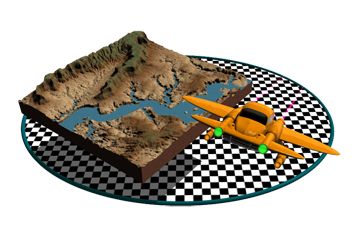Bryce Revisited


Around 1997 I noticed a bit of software which I simply had to have: a landscape generating program called Bryce, named after that hoodoo-filled escarpment in Utah, Bryce National Park. The software’s mind-boggling ability to generate and edit fictional terrains was irresistible to me: I could create, sculpt and render some pretty realistic stuff, once I got some experience. It was god-like, making whole planets, or with brush strokes and other tools, moving and shaping entire mountain ranges.
Moreover, Bryce’s tools allowed the creation of complex objects from primitive shapes and importing of 3D objects from other sources. Later I discovered that actual terrain data from the USGS could be manipulated too, creating depictions of actual landscapes. This was like many of my old childhood toys packed into the same box.
So for three or four years I romped in this, as newer and more powerful versions of the program became available. I was limited only by the power of by my own computer and by my imagination. A few of my early renders took days to complete—one of them took the proverbial forty days and forty nights! Many others posted their work online, both inspiring me and sometimes putting me to shame. Usually, my goal was to achieve a level of realism which seemed just out of reach, but every once in a while, I came close.
When I moved to New Mexico in 2001, I kind of lost track of Bryce, in the pursuit of my main hobby, photography. BugLand, a cute little website I had designed, sort of languished in a corner of my main website, and eventually the java script which made it work became outdated. In 2016 I pulled the plug on the whole thing.
Looking through the images I had made, I decided to revisit Bryce and polish up the old work. I’d pretty much forgotten the working of the program over fifteen years, but as it came back to me, I began re-makes of the files and re-renderings of the images. Overall, I’m very happy with the results, presented here.








